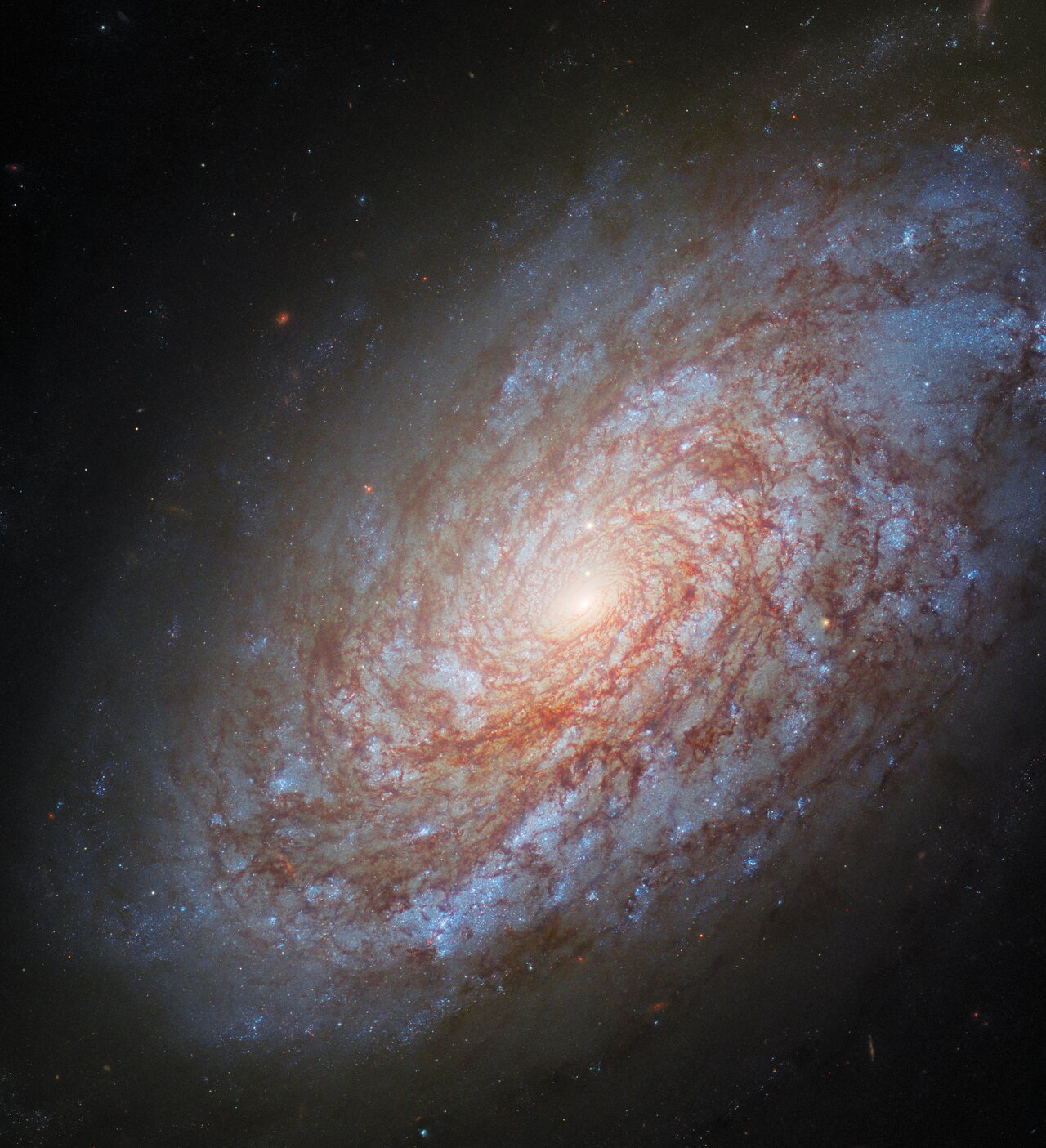Cosmos NGC 4414
This image from the NASA/ESA Hubble Space Telescope unbarred spiral galaxy roughly 51 million light-years away from Earth in the constellation Coma Berenices.
You can see an old image of NGC 4414 that features Hubble data from 1995 and 1999 here, which was captured as one of the telescope’s primary missions to determine the distance to galaxies. This was achieved as part of an ongoing research effort to study Cepheid variable stars. Cepheids are a special type of variable star with very stable and predictable brightness variations. The period of these variations depends on physical properties of the stars such as their mass and true brightness. This means that astronomers, just by looking at the variability of their light, can find out about the Cepheids’ physical nature, which then can be used very effectively to determine their distance. For this reason cosmologists call Cepheids ‘standard candles’.
Astronomers have used Hubble to observe Cepheids, like those that reside in NGC 4414, with extraordinary results. The Cepheids have then been used as stepping-stones to make distance measurements for supernovae, which have, in turn, given a measure for the scale of the Universe. Today we know the age of the Universe to a much higher precision than before Hubble: around 13.7 billion years.
[Image description: A large spiral galaxy is seen tilted diagonally. The arms of the galaxy’s disc are speckled with glowing patches; some are blue in colour, others are pink, showing gas illuminated by new stars. A faint glow surrounds the galaxy, which lies on a dark, nearly empty background. The galaxy’s centre glows in white.]
